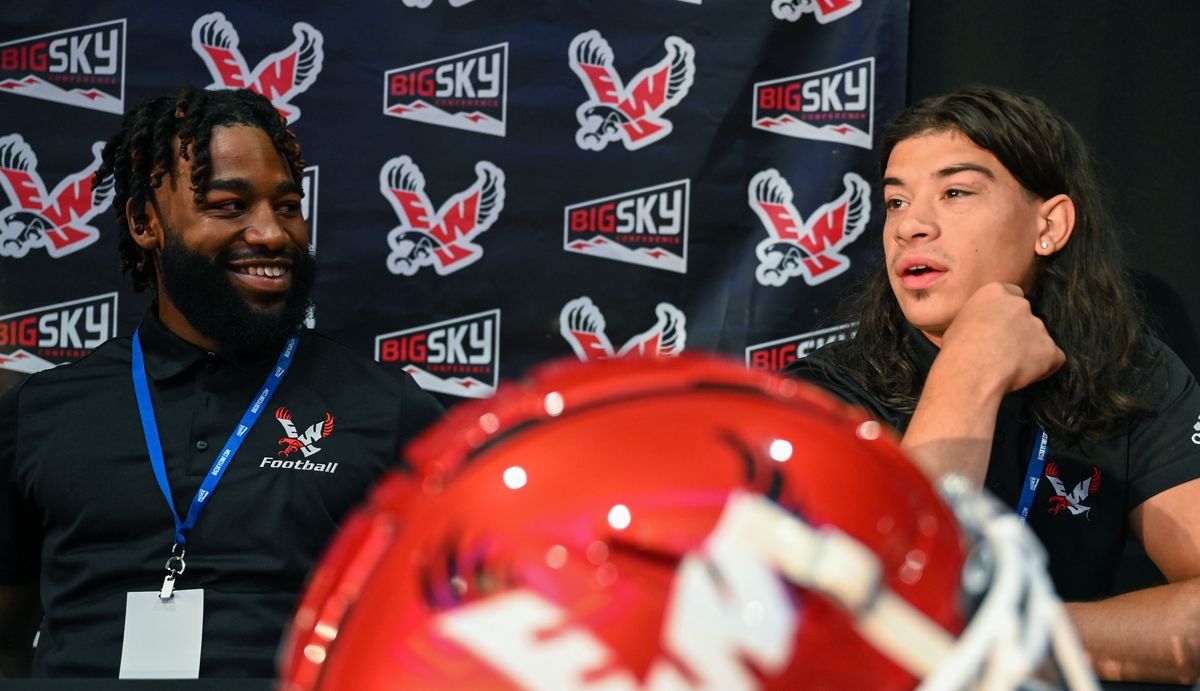State of the Sky: Ripple effect of conference realignment hasn’t moved Big Sky member schools

If the departure of UCLA and USC from the Pac-12 is going to ripple down the ranks of college football in the West, it hasn’t done so yet.
And as of now, the Big Sky Conference’s membership is settled at 10 full-time members and two football-only institutions, giving the league two schedule-friendly numbers after the departure of Southern Utah at the end of last season.
For now at least, there is no imminent movement in or out of the Big Sky.
But on Monday at the Big Sky Football Kickoff in downtown Spokane, commissioner Tom Wistrcill admitted that there’s only so much the league can do toward holding its membership together.
“We’re able to control our membership (by) talking to them about what’s going on,” he said. “If somebody at the FBS level comes and asks one of the schools to join and they want to join, there’s absolutely nothing we can do about it.”
Wistrcill then said he doesn’t know if that is going to happen, but having been an athletic director at a Group of 5 institution – the University of Akron – he is aware of the financial demands of such a vertical move, should an FCS team wish to make the leap.
“It is a huge jump financially from what we do for an opportunity to play in a low-level bowl versus a national championship,” he said.
Geographically, the West currently has three clear tiers of college football, with the Pac-12 recognized as a Power Five conference, the 12-team Mountain West as a Group of Five, and the Big Sky as the most prominent FCS conference.
That fosters a symbiotic financial relationship in terms of scheduling nonconference football games. Wistrcill said those FBS teams want to play seven home games, and playing Big Sky schools is an attractive option because the travel is easier and thereby is less expensive for the FBS schools to cover in their contracts with FCS teams.
This fall, all but one of the Big Sky’s teams – Montana the exception – will play at least one team from the Pac-12 or the Mountain West. Eastern Washington visits Oregon on Sept. 10 and then plays at Florida from the SEC on Oct. 1.
Montana coach Bobby Hauck, whose teams are 28-11 in his second stint with the Grizzlies, has coached in the Pac-12 and the MWC in addition to the Big 12.
“I don’t know if anybody really knows where they fit,” Hauck said Monday. “No one really knows how it’s going to be structured. I think there will be some restructuring in college football to a degree. What that means is hard to define, but I don’t think there’s any way around the fact that that’s going to happen, and every Division I school will have to figure out where they fit.”
Wistrcill also said he expected changes, though he pointed more to the FBS, where he sees a potential tear between the Big Ten and SEC from the rest of the conferences at that level.
At the FCS level, he said, “we kind of all look alike. Our budgets are roughly the same. And I think that when I listen to our (Big Sky) presidents talk, and talk to the leaders around the country, everybody’s (singing) from the same songbook. We’re not chasing the almighty dollar. We’re going to have a balance of academics and athletics.”
Four of the Big Sky’s six charter members – Idaho State, Montana, Montana State and Weber State – have been members every year since the league’s genesis in 1963. Idaho was an original member and remained until making the jump to the FBS after the 1996 season. The Vandals returned to the FCS in 2014.
Gonzaga was the other charter member of the Big Sky – by then it no longer had a football team – but it left in 1979 to join the West Coast Conference.
The league has five other former members: Boise State (1970-96), Cal State Northridge (1996-2001), Nevada (1979-92), North Dakota (2012-18) and Southern Utah (2012-22).